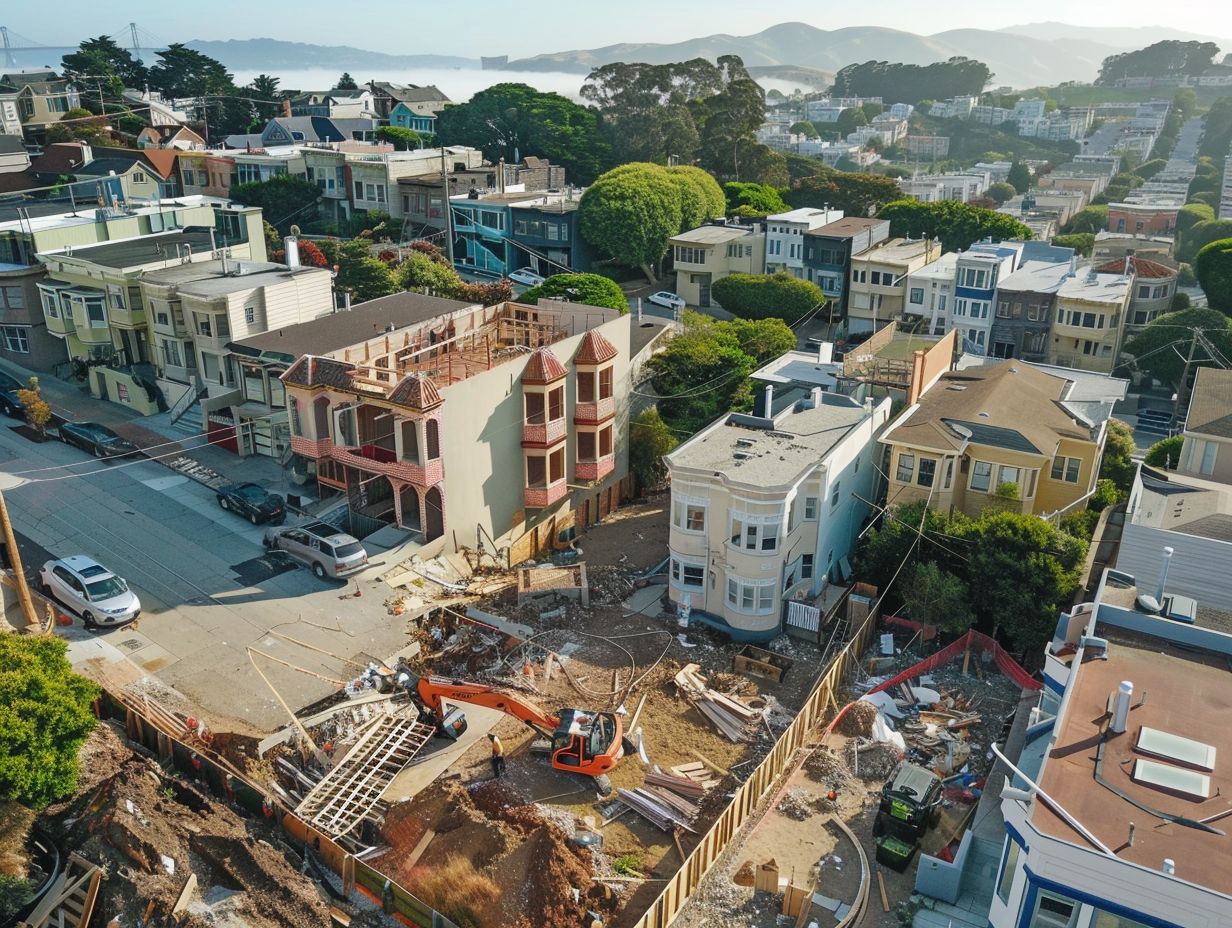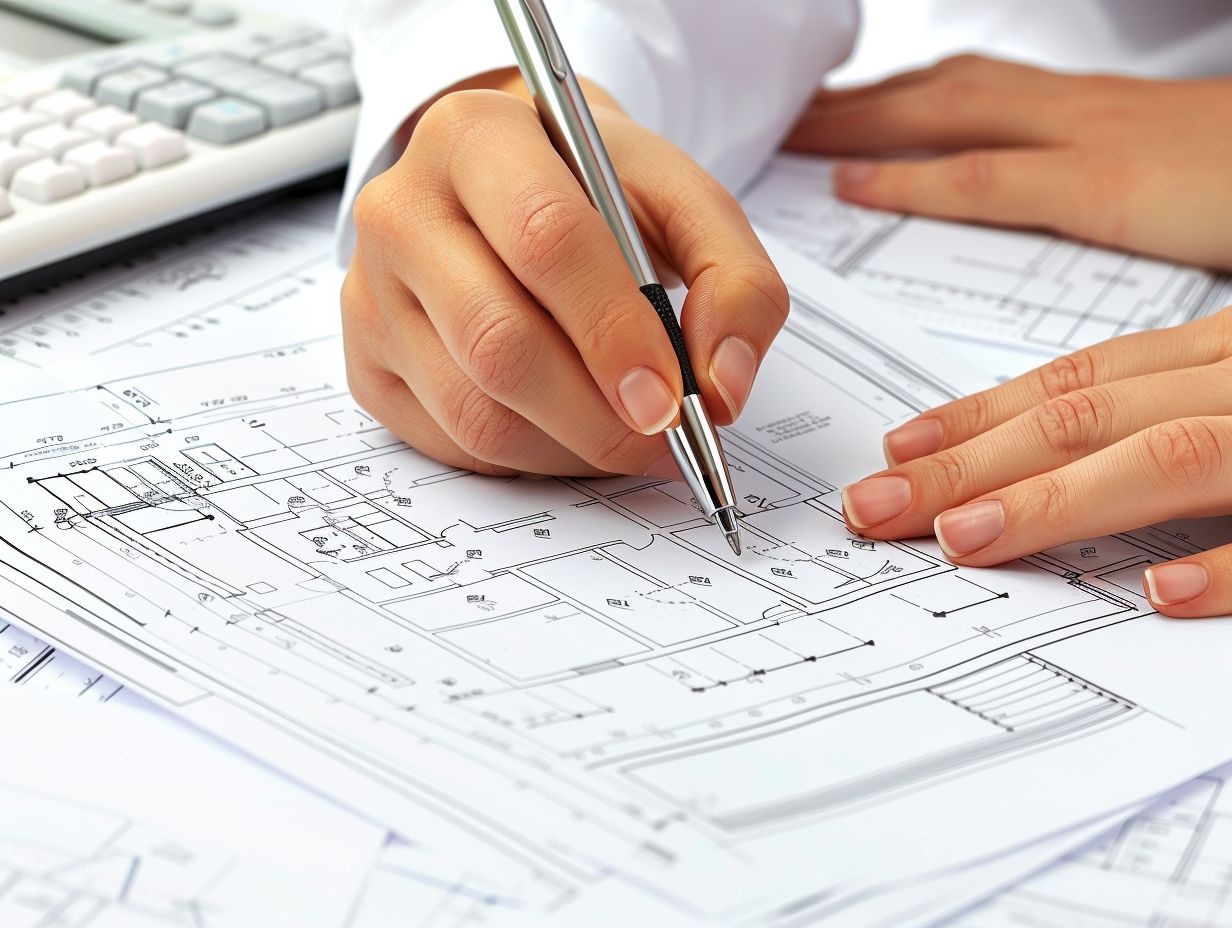
Expanding Your Home In San Francisco An Insiders Guide To Architectural Plans
You are urged to consider the possibility of expanding your residence in San Francisco. Architectural plans play a crucial role in this endeavor, as they serve as a vital tool in guiding you through the various stages of design, permitting, and construction.
This detailed guide delves into the significance of architectural plans, providing valuable information on maneuvering through the permit process, comprehending the diverse types of plans available, and selecting the appropriate architect to oversee your project.
Whether your objective is to increase living space or improve upon the existing layout of your home, this article presents valuable insights aimed at ensuring the successful execution of your home expansion project.
Understanding Architectural Plans
A comprehensive understanding of architectural plans is essential for the successful implementation of any construction or renovation endeavor. Architectural plans act as the foundational blueprint for both the design and structural framework of a building, guiding architects, engineers, and construction teams throughout the entirety of the project.
These intricate plans not only delineate the aesthetic and structural components of a building but also play a crucial role in defining the architectural style to be employed. The detailed specifications and complexities within architectural plans serve as a roadmap for the development of the project, influencing everything from material selections to spatial arrangements.
Architects heavily rely on these plans to effectively communicate their design vision to the construction team, ensuring that the final outcome aligns with the intended architectural concept. The meticulous attention to detail present in these blueprints aids in streamlining the construction process and reducing errors, ultimately leading to a more efficient and successful project completion.
What are Architectural Plans?
Architectural Plans are comprehensive technical drawings that delineate the layout, design, and specifications of a construction project. These plans are meticulously crafted by architects to effectively convey the visual and structural components of a building to all parties involved in the construction process.
They play a pivotal role in the architectural workflow, serving as a tangible representation of the architect’s conceptualization. The blueprints within these plans delineate precise measurements, materials, and positioning of architectural features such as windows, doors, and structural elements. By integrating specific architectural styles into these plans, architects can articulate the desired aesthetic and functionality of the structure. Clear and precise communication through these elaborate plans is imperative to ensure the accurate interpretation and implementation of the design concept during the construction phase.
The Importance of Architectural Plans
Architectural plans are integral to the success of a construction project, as they establish a framework for the design, configuration, and operation of a building, ensuring alignment among all parties involved regarding the project’s vision and objectives.
These comprehensive blueprints function as a visual manifestation of the architect’s concept, transforming intricate ideas into tangible structures. By encapsulating architectural styles and integrating components such as floor plans, elevations, and sections, these plans direct the entire design process from inception to realization. Architects depend on these meticulously prepared schematics to articulate their intentions to designers and contractors, facilitating productive cooperation and guaranteeing that the final outcome reflects the original vision.
Permits and Regulations
The proficient management of Permits and Regulations constitutes a fundamental aspect of any construction or renovation endeavor. This entails securing building permits, diligently upholding rigorous zoning regulations, and complying with building codes. A comprehensive comprehension and adherence to these legal prerequisites are imperative for the successful execution of a project.
The adherence to permits, zoning regulations, and building codes not only ensures the legality of the project but also significantly contributes to the maintenance of safety standards and structural robustness. The permitting procedure typically encompasses the submission of detailed blueprints to local authorities for meticulous review and subsequent approval.
Challenges are inherent in navigating the regulatory frameworks due to the disparate requirements prevalent across various jurisdictions, necessitating alterations to meet specific codes. Effective mitigation of these challenges can be achieved through meticulous planning, transparent communication with regulatory entities, and the enlistment of seasoned professionals to expedite the permitting process and efficiently address potential compliance concerns.
Navigating the Permit Process
The Permit Process involves a detailed understanding of the regulatory requirements and necessary documentation for obtaining permits related to construction projects. Each stage in the permitting process, from the initial submission of applications to regulatory compliance assessments, plays a vital role in securing project approval.
Maintaining compliance with building codes and regulations is imperative throughout the permit process. Providing precise and comprehensive documentation is crucial to prevent delays or rejections.
Common challenges encountered during the permitting process include incomplete information, improper forms, or inadequate evidence of project compliance. To address these obstacles, applicants should thoroughly review all prerequisites before submission, maintain effective communication with regulatory bodies, and seek professional guidance when necessary.
By adopting an organized, proactive, and meticulous approach, individuals can enhance the chances of a streamlined approval process for their building permits.
Complying with City Regulations
Adhering to City Regulations is crucial to circumvent legal challenges and facilitate the smooth execution of projects. An understanding of local zoning regulations, building codes, and compliance standards is imperative to uphold project integrity and fulfill legal obligations.
It is imperative for construction endeavors to conform to city regulations, zoning ordinances, and building codes in order to preempt delays and legal complications. By adhering to these directives, developers can ward off costly penalties and legal disputes that may ensue from non-compliance. Local regulations play a pivotal role in shaping the construction process and guaranteeing that projects are carried out securely and in alignment with community norms.
Although negotiating compliance obstacles, such as securing permits and authorizations, may be intricate, prioritizing adherence is essential to forestall setbacks in the construction schedule and potential legal ramifications.
Types of Architectural Plans
Understanding the various types of architectural plans is crucial for determining the most appropriate design approach for a project. Ranging from traditional blueprints to contemporary 3D renderings, each type provides distinct insights into the architectural styles and design attributes of a structure.
Blueprints typically offer a technical, two-dimensional depiction of a building, emphasizing measurements, layout, and construction specifics. Conversely, 3D renderings present dynamic designs, delivering a lifelike, immersive visualization that facilitates improved comprehension of spatial relationships and aesthetics.
The selection between these plan types can significantly impact interior design decisions by influencing how spaces are perceived and utilized. For example, while a blueprint may underscore structural aspects, a 3D rendering can accentuate design elements such as furniture placement and lighting effects.
Blueprints vs. 3D Renderings
The discussion regarding Blueprints and 3D Renderings revolves around the level of detail and visual presentation that each medium provides. Blueprints are renowned for their precision in measurements and technical specifications, while 3D renderings excel in bringing designs to life through realistic visuals and immersive experiences.
Blueprints are fundamental to any architectural project, as they furnish essential information required for construction and structural aspects. However, they may lack the aesthetic appeal and spatial comprehension that 3D renderings can provide. On the other hand, 3D renderings are proficient in illustrating lighting, materials, and textures, enabling clients and designers to envisage the final appearance of a space. Despite their visual appeal, 3D renderings may not always capture every technical detail with the precision that blueprints offer, potentially leading to discrepancies during the construction phase.
Both blueprints and 3D renderings play essential roles in shaping architectural styles and influencing interior design concepts. Each method presents unique advantages and limitations in the design process, contributing to the overall evolution and development of architectural and interior design practices.
Choosing the Right Plan for Your Project
Choosing the most suitable plan for your project requires a thorough evaluation of your design preferences, project scope, and budget limitations. Whether one opts for conventional blueprints or immersive 3D renderings, selecting the appropriate plan is essential for visualizing the envisioned space.
Various architectural styles present distinct design approaches, ranging from the timeless sophistication of Victorian architecture to the contemporary minimalism of Bauhaus. It is imperative to ascertain how each blueprint or 3D rendering aligns with the desired aesthetic of the project. For instance, if the objective is to achieve a minimalist ambiance, a sleek and uncluttered blueprint might be more appropriate, whereas a detailed 3D rendering can capture intricate elements for a more intricate style.
By comprehending how these plans cater to specific architectural styles, one can make a well-informed decision that breathes life into their vision.
Hiring an Architect
The decision to engage an architect is a crucial one, as it profoundly impacts the success of your construction or renovation endeavor. Architects bring specialized expertise in design, structural planning, and project management, facilitating the realization of your vision while adhering to budgetary and scheduling constraints.
Architects play a pivotal role in the financial aspects of a project, ensuring that it remains within the predefined financial boundaries without compromising the desired outcomes. When seeking a proficient architect, it is essential to consider specific qualities, including effective communication skills to foster collaboration with clients and contractors, adept problem-solving abilities to address design challenges, and a meticulous attention to detail to guarantee the flawless execution of every project facet.
Choosing a competent architect possessing these attributes assures that your project will be managed with a high level of professionalism and expertise.
Qualities to Look for in an Architect
Selecting the appropriate Architect for a project necessitates the evaluation of key qualities such as design ingenuity, project management proficiency, and effective communication aptitude. An architect should possess not only a mastery of architectural styles but also demonstrate excellence in overseeing intricate projects seamlessly.
By harmonizing innovative design concepts with pragmatic project management acumen, a proficient architect can seamlessly actualize a project. The capacity to communicate proficiently with clients, contractors, and team members is paramount in ensuring alignment among all stakeholders throughout the architectural process. Robust communication skills give the power to architects to clearly articulate their vision, address conflicts expediently, and foster collaboration among diverse teams. Architects who exhibit active listening, concise articulation of ideas, and adaptability to various communication styles are more inclined to deliver successful projects that meet the requirements and aspirations of their clients.
Costs and Budget Considerations
Understanding the costs and budget considerations associated with hiring an architect is essential to ensuring that a project remains within financial parameters. From initial design fees to construction expenses, having a well-defined budget plan is crucial for managing costs and enhancing design outcomes.
When entering into an agreement with an architect, it is imperative to establish a realistic framework for cost estimation that is in line with your financial capabilities. Effective budgeting requires a thorough evaluation of the project scope, expected costs, and possible contingencies to prevent budget overages. By carefully assessing project needs and negotiating design expenses, clients can strike a balance between architectural ingenuity and financial viability. Utilizing efficient cost estimation methodologies facilitates proactive decision-making throughout the design phase, guaranteeing that the allocated budget is utilized judiciously to achieve project objectives.
Tips for a Successful Home Expansion Project
Undertaking a Home Expansion Project necessitates meticulous planning, effective communication, and adherence to contemporary design and renovation trends. By integrating innovative design strategies, prudent budgeting, and fostering transparent communication channels, one can ensure a successful and fulfilling expansion endeavor.
Staying abreast of the latest design trends can offer inspiration and guidance throughout the project duration. Emphasizing functionality and aesthetics in expansion blueprints is crucial to establishing a cohesive living environment.
Regular communication with contractors and designers is pivotal in maintaining project momentum and promptly addressing any potential concerns. Establishing a realistic budget from inception and diligently monitoring expenditures are instrumental in cost management.
It is imperative to underscore that meticulous planning and remaining informed about renovation trends will contribute significantly to a seamless and gratifying home expansion journey.
Communication with Your Architect
Effective communication with the architect is crucial for translating the client’s vision into reality. Open and clear dialogue concerning design preferences, project timelines, and budget limitations helps create a collaborative atmosphere conducive to project success.
Maintaining ongoing communication with the architect allows for timely resolution of any concerns or modifications, thereby preventing potential delays or misunderstandings. Project coordination plays a critical role in ensuring all involved parties remain aligned and informed throughout the design and construction phases.
Regular check-ins and updates aid in monitoring progress and ensuring project adherence to the established timeline. Proficient communication skills give the power to homeowners and architects to collaborate seamlessly, exchanging valuable insights and feedback to refine the design and achieve the desired project objectives.
Managing Expectations and Timeline
It is imperative to effectively manage expectations and timelines for the successful execution of a home expansion project. By defining realistic project timelines, establishing clear objectives, and aligning cost estimates with design outcomes, homeowners can ensure that project milestones are achieved in a timely manner.
The implementation of efficient project management techniques can assist in maintaining the renovation timeline on schedule. Regular progress check-ins with contractors, designers, and suppliers can facilitate progress monitoring and address any potential delays. It is equally essential to track the budget meticulously to prevent exceeding costs and ensure financial transparency throughout the project.
Adherence to the specified timeline not only guarantees timely completion but also aids in sustaining project momentum and reducing disruptions to daily life throughout the home expansion process.




No Comments